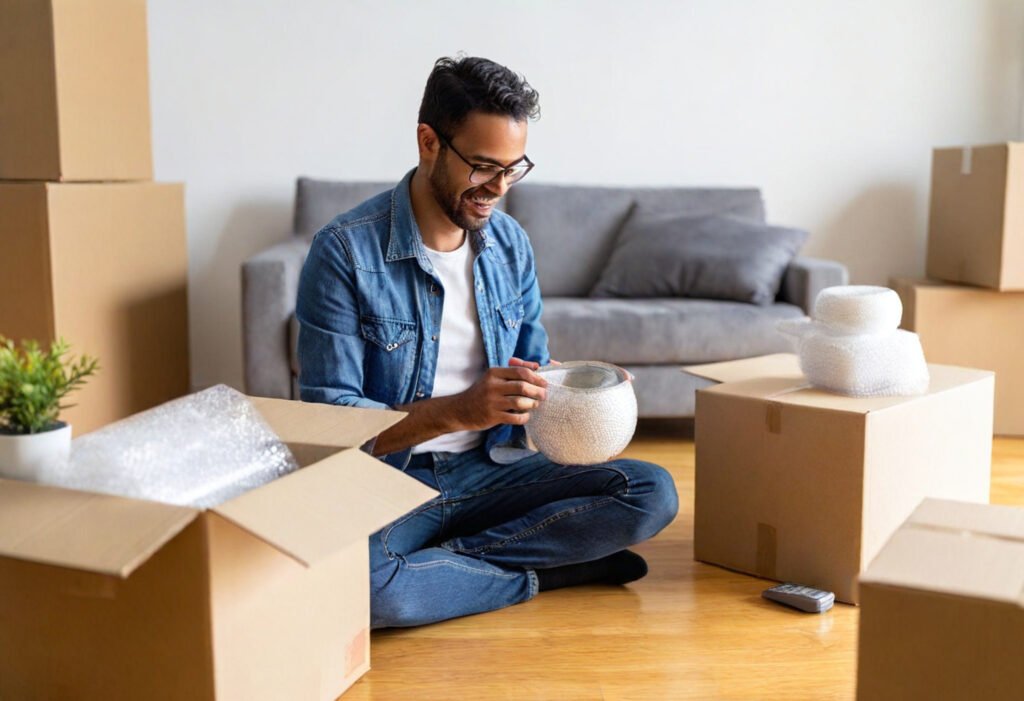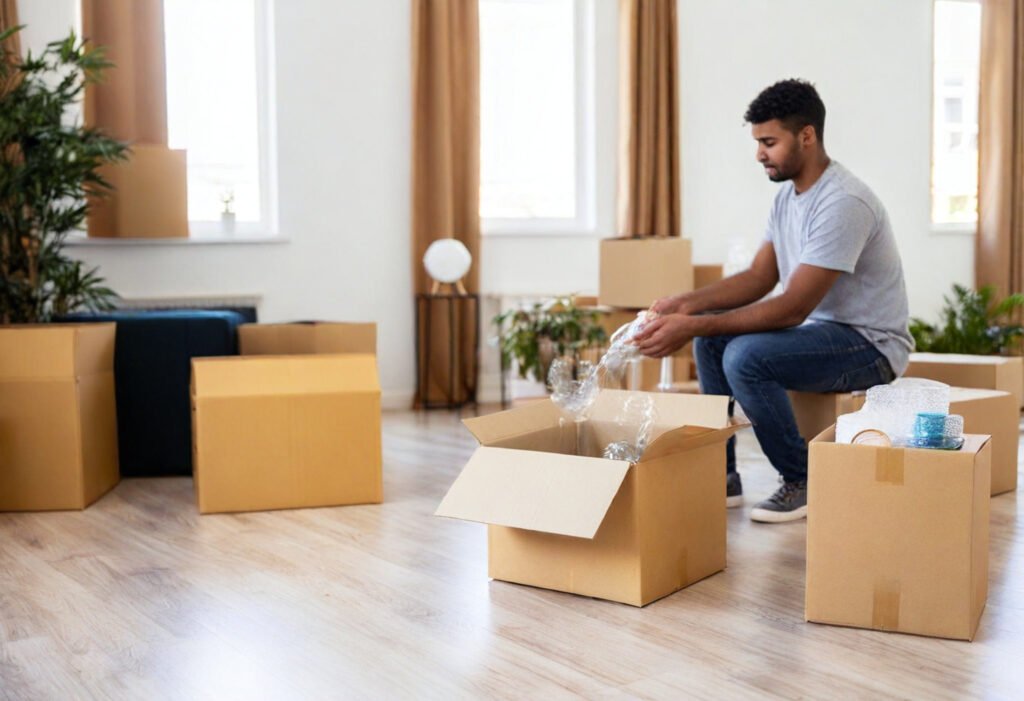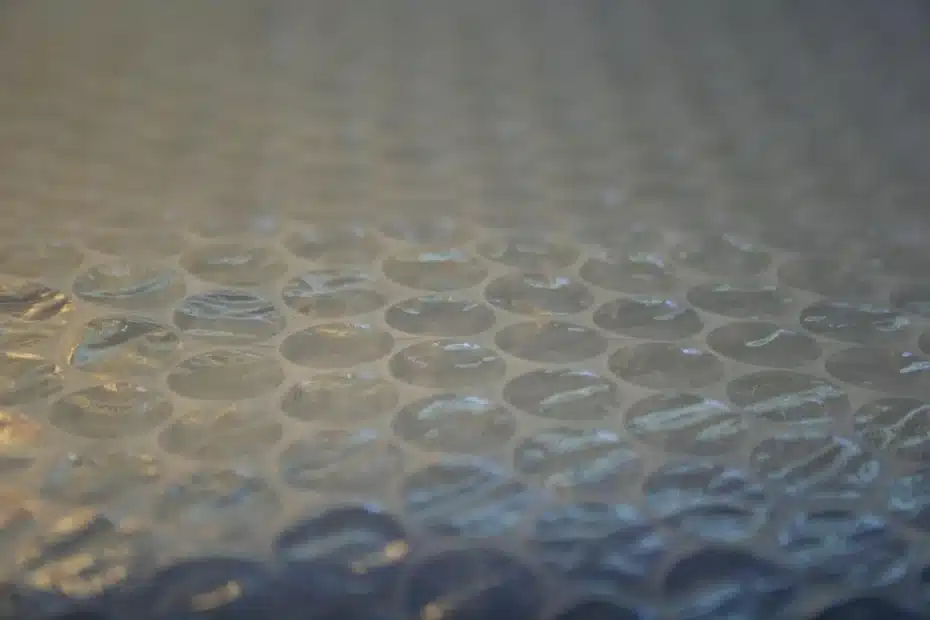Packing fragile items creates unique challenges beyond the basic task of moving. Of course, protecting your valuable possessions raises the stakes—you probably own several breakable items that need extra care to reach your new home safely.
Properly securing delicate objects means more than just putting them in boxes. Your precious belongings deserve the best protection. Packing paper and bubble wrap become your trusted friends throughout this process. These materials create shock-absorbing layers that fill empty spaces and keep items from shifting during transit. Separate shipping options work better for valuable pieces like paintings or sculptures instead of loading them onto the main moving truck.
This piece offers expert tips for packing fragile items safely. You’ll learn everything from picking the right materials to handling specialized objects, so your belongings arrive intact at their destination.
Choose the Right Packing Materials
The right packing materials are crucial to protect fragile items. Your valuables need proper protection layers to prevent breakage during transport.
Packing paper vs. bubble wrap: at the time to use each
Packing paper does a great job of protecting surfaces without taking up much space. It works best to wrap dishes, mirrors, and picture frames. You can stack these items easily after wrapping them. Bubble wrap gives better protection against impacts because of its air-filled cushioning. You should use bubble wrap for electronics, lamps, and larger breakable items that might get punctured.
The best protection comes from using both materials the right way. Start by wrapping items in packing paper to stop scratches. Then add bubble wrap as cushioning. This method works well for valuable glass pieces and delicate electronics.
Using foam, peanuts, and blankets for extra protection
Foam molds perfectly to your items’ shapes and gives amazing cushioning. Dish foam works especially well with kitchenware. It makes packing plates and glasses much quicker.
Packing peanuts are the best way to fill empty spaces in boxes. These light pieces create a protective cushion around oddly shaped items like vases, collectibles, and holiday figurines. On top of that, foam peanuts won’t create static, which makes them safe for electronics.
Moving blankets work great for heavy, fragile items before you add plastic covering. This combination protects against impacts and moisture.
Eco-friendly alternatives to traditional materials
Sustainable options now work just as well as regular materials. Biodegradable packing peanuts from corn or potato starch give similar protection. They dissolve in water and break down naturally. These plant-based options are non-toxic and safe if kids or pets accidentally eat them.
You can also find compostable bubble wrap, corrugated cardboard bubble alternatives, and recycled paper products. Cassava starch packaging creates strong, water-soluble protection for smaller items. Paper-based cushioning materials can be recycled fully while still keeping your items safe.
Pack Boxes the Right Way

The right packing materials matter, but knowing how to assemble and fill your boxes makes the real difference in protecting breakable items during a move. Here’s the best way to make sure your fragile items reach their destination without damage.
Reinforce the bottom of each box
Your box’s bottom carries most of the weight, so reinforcement becomes crucial. Extra strips of packing tape across the seams and around the edges will secure the bottom. Heavy items need a cardboard base layer – just cut a single piece to fit inside the box bottom to spread the weight evenly. This reinforcement stops catastrophic bottom failures that could destroy your valuables, since gravity works against you.
Place heavy items at the bottom
Weight distribution plays a key role in box stability. Boxes often topple over because of poor weight distribution – it’s one of the most common moving accidents. The heaviest items should always go at the bottom to create a stable base for lighter, more delicate pieces. Your items won’t get crushed and will stay put during transport this way. Boxes become easier to carry, and people are less likely to drop them.
Fill empty spaces to prevent shifting
Empty spaces spell trouble when you pack fragile items. Pack your items first, then stuff all gaps with packing materials to stop movement. Packing peanuts work well, but vibration during transport can make them settle and move around. Crumpled packing paper, clothing, or towels work better to fill spaces. Professional movers use packing paper specifically to fill empty spaces and keep items from touching each other.
Label boxes with ‘Fragile’ and arrows
Clear labels tell handlers they need to be careful with their boxes. Write “FRAGILE” in big, bold red letters on every side of boxes with delicate items. Directional arrows help when items must stay upright. These labeling tips will help protect your items:
- Clear packing tape over labels protects them from moisture and wear
- Labels work best on the largest surface, where your package stays properly oriented
- Room information helps ensure proper placement at your new home
Protect High-Value and Breakable Items

Valuable possessions just need extra care during moves. High-value items aren’t just expensive to replace—you can’t replace them at all. Proper packing helps avoid damage that can get pricey or break your heart.
Wrap valuables in multiple layers
Multiple layers create protection zones that your precious items need. Soft packing paper forms the first layer to prevent scratches on surfaces. Bubble wrap acts as a shock-absorbing second layer, secured with tape. Here’s what experts suggest to protect your valuables:
“Everything from glasses and plates to fragile decorative items should be individually wrapped based on size, shape, and material. Remove any loose pieces, like lids, and wrap those separately,” advises moving professionals. Fine china needs bubble wrap first. Secure it with tape and pack in smaller boxes instead of stacking with other items.
Use specialty boxes for artwork and glassware
Your artwork and specialty items won’t stay safe in standard moving boxes. Specialty crating makes the most important difference—art shippers report zero damage claims that have ever spread across twenty years with proper crating systems. These specialized containers work without nails, screws, or packing peanuts while keeping items protected better.
Compartmentalized boxes with dividers keep your glassware and stemware from touching during transit. Climate-controlled containers protect paintings and sculptures from temperature changes that could warp or damage them.
Transport irreplaceable items yourself if possible
Professional movers agree – keep truly irreplaceable items with you during moves. “If you have valuable paintings, sculptures, or other pieces, it’s a good idea to either ship these separately from the moving truck or moving container. You may also want to think over taking them in your vehicle if you have the space.”
This lets you watch over your most precious possessions directly. One expert points out, “Placing them on a moving truck opens the door to lots of movement, or the box not being handled with care. In the car with you will provide the safest way to get the item to its new home.”
Handle Odd-Shaped and Large Fragile Items
Moving oddly shaped or large, fragile items creates unique challenges that regular boxing methods don’t deal with very well. These items need creative solutions and extra care to avoid damage during transit.
Wrap with cardboard and secure with tape
Oddly shaped, fragile items need custom protection. Start by wrapping the item in bubble wrap to cover all surfaces and edges. Place it on a piece of flexible cardboard and bend the edges until they meet around the item. Add extra cardboard pieces over vulnerable spots and use plenty of packing tape to secure everything.
Round items like globes or decorative spheres work best with Kraft paper as the first layer. Add bubble wrap or foam sheeting before placing them in a sturdy container. This layered approach stops movement inside the box during transit and reduces the risk of breakage.
Use dollies and straps for heavy items
Heavy, fragile items need proper equipment to move safely. Cushioned transport carts and dollies with smooth wheels help reduce vibrations that could harm delicate goods. Using straps to prevent shifting during transportation is a vital step to prevent damage.
Large appliances like refrigerators need these steps:
- Empty and secure all removable parts
- Wrap with stretch wrap and furniture pads
- Secure onto an appliance dolly with tie-down straps
Grandfather clock’s weights and pendulums should come out first. Wrap all parts separately in bubble wrap, secure the clock to a furniture dolly, and cover it with furniture pads.
Avoid rolling items like pianos on casters
Piano casters work only for minor position adjustments, not for transportation. These small wheels can break under the instrument’s weight during moves and might damage both the piano and your floors.
Upright pianos can weigh up to 900 pounds, while grand pianos might reach 1200 pounds. This makes them dangerous to move incorrectly. A piano dolly, piano board, and ratchet straps should replace the piano’s built-in wheels. The instrument needs bubble wrap or shrink wrap, plus furniture pads to protect it fully.
Whatever odd-shaped item you’re moving, patience and the right equipment will help you avoid damage that can get pricey.
Plan for Long-Distance or Delayed Moves
Packing fragile items for long-distance moves comes with its own set of challenges. Your items face longer transit times and more handling, which means they need extra protection beyond regular packing methods.
Double-tape and reinforce boxes
Box strength matters even more on long trips. Start by reinforcing all seams with heavy-duty packing tape. Add multiple strips in both directions to create a stronger seal. Pay special attention to the bottom and top seams where boxes face the most pressure during stacking.
Never pack delicate items in weak or used boxes. Stay away from fruit crates, storage boxes, and delivery containers like Hello Fresh boxes – they aren’t built for moving.
Your most valuable breakables might need double-boxing if you doubt a box’s strength. This method gives much more protection for items on long journeys. Extra cardboard at inner corners creates stronger support points and reduces the risk of box failure.
Use straps to secure boxes in the truck
Box movement inside the truck needs careful attention. Cargo straps should anchor stacked boxes to the truck’s sides. This prevents them from shifting during acceleration, braking, and turns. Many people skip this step, but it stops boxes from creating a dangerous domino effect.
Heavy boxes must stay at the bottom with fragile items safely stacked above. Tall box stacks can lead to collapse during long trips, even with proper packing.
Think over temporary storage for fragile items
Storage often becomes part of the moving process. About 10% of Americans use self-storage units each year, and this number keeps growing. Here’s what matters when storing breakables:
- Pick climate-controlled spaces to avoid temperature damage
- Find facilities with 24/7 security (86% of people list security as their top priority)
- Get month-to-month contracts to keep your options open during the move
Portable storage containers work great for valuable items. These containers come to your home, let you pack at your speed, and then move to your new place or stay in storage until needed.
Unpack with Care and Strategy
You just need to be as careful while unpacking as you were during packing to keep your fragile items safe during the trip. A step-by-step approach prevents accidents and will give a smooth transition to your new space.
Label boxes for priority unpacking
Boxes with breakable items should be marked as “Fragile – Unpack First” to get immediate attention when they arrive. This smart labeling helps handle fragile items with care and ensures they’re opened before other boxes. This reduces the risk of accidents while you settle in.
A numbering system works best when you mark boxes 1-10 with items you’ll need right away, and higher numbers for less urgent stuff. This creates a clear sequence that lets you set up functional spaces first. You can also use colors to mark different rooms—red for kitchen items or blue for bathroom essentials—which makes the process even smoother.
Group similar items together
Your unpacking becomes more logical when you pack and label items by room and type. Kitchen glassware should stay in separate boxes from decorative, fragile items. This makes it easy to find specific items when setting up your new home.
Set up specific areas for different categories as you unpack. This way, everything finds its proper place from day one. This system ended up saving you from searching through multiple boxes just to find one item.
Inspect items as you unpack
Check each item for damage right after unpacking. Look at boxes for external damage before opening them – this warns you about possible problems inside. Open damaged-looking boxes extra carefully to avoid getting hurt from broken items.
Take photos of any damage you find. These pictures are vital for insurance claims or moving company complaints. For valuable items, check them against your pre-move inventory list to make sure everything arrived safely.
Take your time to unwrap each piece. Quick movements might lead to drops or bumps. Remember that unpacking delicate items isn’t a race.
Know What to Do If Something Breaks
Accidents happen even with careful packing of fragile items. You need to know how to handle breakages just as much as preventing them.
Clean up broken glass safely
Broken glass needs quick action to prevent injuries. Everyone must wear protective footwear and thick gloves before getting near the area. Glass fragments can spread really far, so check about 15 feet from where it broke.
Regular household brooms can trap glass shards, so here are safer ways to clean up:
- Press folded, damp paper towels onto smaller fragments
- Press a cut potato’s flesh side onto tiny shards
- Use duct or packaging tape, sticky side out, to pick up minute pieces
- Vacuum carpeted areas well and throw away the vacuum bag right after
Wrap all collected glass in newspaper or heavy padding before putting it in trash bags. This protects others from getting hurt.
Assess damage to electronics or appliances
Taking clear photos from multiple angles is a vital first step if you find damaged electronics after moving. Make a detailed list of affected items and write down exactly what’s wrong with each one.
Don’t turn on damaged electronic equipment right away. Check if you still have warranty coverage or if moving insurance will pay for repairs. Look for repair services that give free evaluations without bench fees and offer at least a one-year warranty on parts and labor.
Isolate and clean up any leaks or spills
Quick action helps contain spills from leaking bottles or containers before they spread. Chemical spills mixed with broken glass need special care – use tongs instead of your hands to pick up glass pieces first.
Hazardous materials need specific cleanup methods. You can handle diluted acids and most solvents with proper protection, but radioactive materials need expert help. If chemicals touch your skin or eyes, rinse the area with water for fifteen minutes before getting medical help.
Conclusion
Packing fragile items takes patience, attention to detail, and the right materials. This piece explores detailed strategies that ensure your breakables arrive safely at their destination.
The right materials protect your items from damage. A strategic mix of packing paper, bubble wrap, and eco-friendly alternatives creates protective layers for different items. The right box reinforcement and weight distribution prevent failures during transit.
Valuable possessions just need extra care. Note that some irreplaceable items travel better in your vehicle than on a moving truck. Unusual shapes require custom solutions beyond basic boxing techniques.
Long-distance moves create unique challenges that call for extra reinforcement and careful planning. Clear labels make unpacking quick, while systematic unwrapping helps spot any damage right away.
Things can go wrong even with the best preparation. You should know how to clean broken items safely and document damage for insurance claims.
Time spent packing fragile items carefully pays off when you find your cherished possessions intact at your new home. These expert guidelines help protect your valuable items during the experience. Your precious items carry memories and meaning to your new beginning, making their protection essential.

